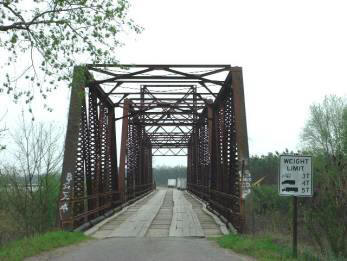

Judsonia High School after the 1952 tornado.
Photo courtesy Becky Williams, White County Historical Society
|
S |
Two other events which would have gained national attention if they had happened at a later date would be the Cobbite story which transpired in the hot summer of 1876 (see 1966 and '67 editions of White County Heritage) and the Carroll murder and hanging which received statewide prominence in 1886 (see 1982 White County Heritage).
All of these stories are tragic and grab our attention. These top five major stories of tragedy and sadness lead me to think of what would be the top positive stories in White County's history. In thinking of this, I realize that good news happens over longer periods of time, instead of a few minutes or days.
I believe that our good news stories would include the following: The construction of the St. Louis, Iron Mountain and Southern (now the Union Pacific) Railroad in 1872-73 opened the county to easier immigration and led to markets for products from the area. The eventual development or enlargement of all of the incorporated towns in the county with the exception of Rose Bud was made possible by various railroads.
A second positive story is the development of higher education. Galloway, Harding and Arkansas State University-Beebe have all added to the educational level, cultural enrichment and economic development of the citizenry.
 A
third positive story would be the improvement of the road system with the
building of bridges and the graveling of roads eventually leading to more
interaction between communities. The move from an agricultural economy to a more diversified
manufacturing and service economy, which started in the 1950s and has continued
since then, has led to a higher standard of living -- another story.
A
third positive story would be the improvement of the road system with the
building of bridges and the graveling of roads eventually leading to more
interaction between communities. The move from an agricultural economy to a more diversified
manufacturing and service economy, which started in the 1950s and has continued
since then, has led to a higher standard of living -- another story.In November of 1953 Judsonia was selected by Grit magazine, a national publication, as "The Most Community Conscious Small Town in America," stating that "the real story of Judsonia is not of bricks and paint and of rebuilding. The people have been drawn together in a community family. They have helped one another in the tasks that must be done. They have faced and solved their problems. They have a great pride in the work they have accomplished, and their devotion to Judsonia and its traditions is a living thing (p.218 That's Judsonia by W.E. Orr).
The tornado did not keep the people of Judsonia down. They came back and rebuilt a community of which they are justifiably proud today.